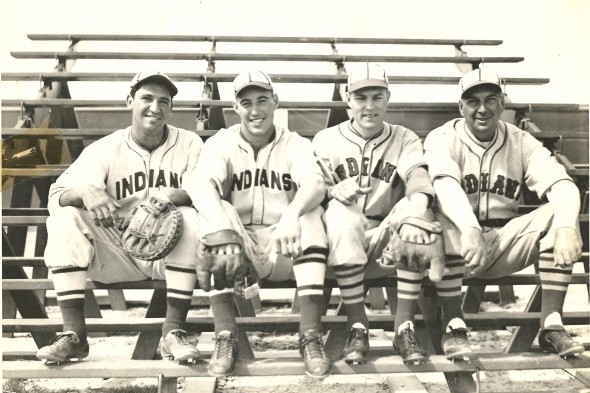
By David Eskenazi and Steve Rudman
Jack Lelivelt spent most of Jan. 20, 1941, alone in his office, pouring over contract offers he had prepared for the 32 players listed on the Seattle Rainiers preseason roster. After wrapping up that annual task, Lelivelt made sure all 32 envelopes were deposited in the mail, and then left for a dinner engagement he had with Roscoe Torchy Torrance, vice-president of the team, at Torrance’s home in the city’s north end.
Following dinner, Lelivelt and Torrance repaired across town to Civic Auditorium, where they had tickets for the evenings entertainment, a much-anticipated basketball game between the Community League All-Stars and Abe Saperstein’s famous Harlem Globetrotters.
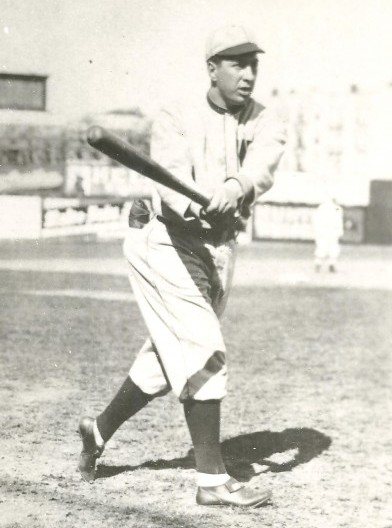
Near the end of the Globetrotters 39-28 victory, Lelivelt, according to the account Torrance provided, turned to Torrance and told him that he was experiencing chest pain. And before 6,500 fans, the largest crowd to witness a non-collegiate basketball game in Seattle, could file out of Civic Auditorium, Torrance recognized that the manager of the Seattle Rainiers, now ashen, was in serious trouble.
Torrance escorted Lelivelt back to the Washington Athletic Club where Lelivelt was administered first aid, but after Lelivelt collapsed, Torrance had Lelivelt rushed to Maynard Hospital.
Dr. William A. Glasgow, the Rainiers team physician, ordered an oxygen tent, but Lelivelt couldnt rally and lasted just two hours, dying at 11:18 p.m. — of coronary thrombosis at the age of 52.
At least two Seattle columnists, George Varnell of the Times and Royal Brougham of the Post-Intelligencer, likened Lelivelts untimely passing to those of Pete Muldoon and Enoch Bagshaw, two other Seattle sporting icons fatally striken in their prime.
Muldoon, who coached the Metropolitans to a Stanley Cup title in 1917 (and to the Stanley Cup finals in 1919), died in 1929 at 48 while inspecting a piece of property in Tacoma with boxing promoter Nate Druxman, on which they hoped to build a skating rink.
Bagshaw, who led the University of Washington to its first two Rose Bowl appearances, in 1924 and 1926, had died a year after Muldoon’s passing at 46, also from a heart attack, in Olympia.
With two pennants and one runner-up finish in his three seasons as manager of the Rainiers, Lelivelt had been at least as successful in his sport as Muldoon and Bagshaw had been in theirs.
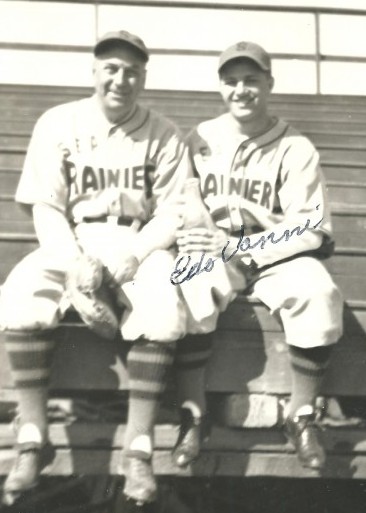
Born Nov. 14, 1885, in Chicago, John Frank Lelivelt began his career in professional baseball in 1906 in the Class C Northern Copper Country League with Lake Linden, MI. He then played one year at Hartford in the Class B Connecticut State League and slightly more than a year at Class B Reading, a Philadelphia Athletics farm club, in the Tri-State League. Although he busted fences at Reading, the Athletics made him part of a package of players that Connie Mack used to acquire Home Run Baker.
Lelivelt made his major league debut, with Walter Johnsons Washington Senators, on June 24, 1909, and spent parts of the next six seasons with the Senators (1909-11), New York Highlanders and Yankees (1912-13) and Cleveland Naps (1913-14), first as an outfielder (in Cleveland he backed up Shoeless Joe Jackson) and later as a first baseman after injuries slowed him.
Lelivelt never developed into a front-line major league player, but demonstrated he could hit when given an opportunity. He batted .320 in 72 games for Washington in 1911, but the Senators saw fit to trade him, along with catcher Gabby Street, in December of that year to the Highlanders for infielder John Knight and shortstop Roxy Roach.
Lelivelt hit .362 in 36 games for the 1912 Yankees, but on May 20, 1913, New York swapped him with outfielder Bill Stumpf to the Indians for Roger Peckinpaugh, one of the best shortstops of the era.
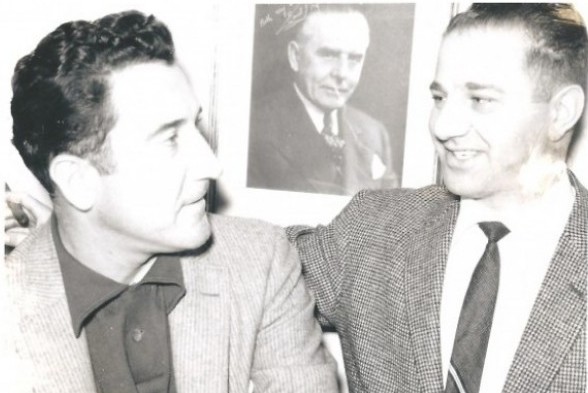
Lelivelt played in 347 major league games, finishing with a .301 batting average with 43 doubles, 22 triples, two homers and 126 RBIs.
One of his highlight moments occurred on Oct. 5, 1912, when his eighth-inning home run lifted the Yankees to an 8-6 win over Lelivelts former team, the Senators, in the last game played at Hilltop Park (the famous Charles Conlon photo of Ty Clobb stealing third was taken at Hilltop Park).
Lelivelt might have enjoyed a lengthier stay in the majors, but broken arches robbed him of the opportunity, and in 1914 he became a full-time minor leaguer.
Lelivelt produced a number of great years at the plate, including a .346 average with Kansas City (American Association) in 1915 (led the league with 199 hits, including 41 doubles) and a .416 mark with Omaha (Western League) in 1921.
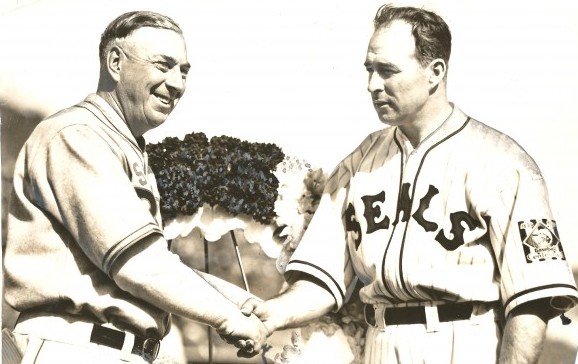
Lelivelt also hit .325 in 1918 for Louisville (American Association), where one of his teammates was Joe McCarthy, who managed the Yankees from 1931-46 (in 1918, Lelivelt led the AA with 11 triples).
Lelivelt played 18 minor league seasons, totaling 2,671 hits, including 533 doubles, while hitting .331.
(Lelivelts minor league batting feats received modern examination in 2007 when Brandon Watson of the Columbus Clippers put together a 43-game hitting streak, the longest in International League history. The previous record had been 42 games, by Lelivelt for the 1912 Rochester Hustlers, also of the International League)
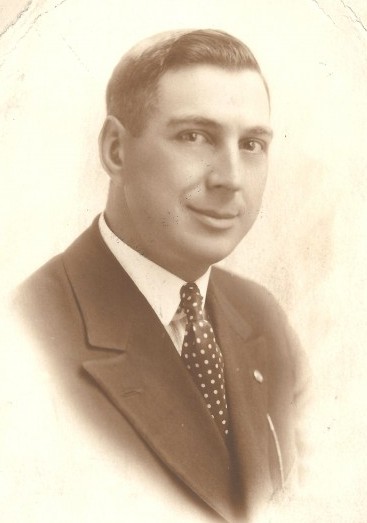
Lelivelt got his first taste of running a team in 1920 when he served as player-manager of the Omaha Rourkes of the Western League.
Fired early in 1921 when Omaha got off to a 7-9 start, Lelivelt became player-manager of the Tulsa Oilers of the Western League (1922-24).
In 1921, he trashed Western League pitching, batting .416 (led all of minor league baseball) with 274 hits and an incredible 70 doubles (Lelivelt’s hit total that year would never be broken). In 1922, he hit .369 with 219 hit and won his first pennant.
Lelivelt retired as a player after the 1925 campaign and became a full-time manager, first with Milwaukee (American Association) in 1926. Although his Brewers teams had second-place finishes in both 1927 and 1928, Milwaukee fired him a third of the way through 1929 after the Brewers started out 21-37.
Lelevilt did not stay unemployed long. In 1930, chewing gum magnate William Wrigley selected Lelivelt as manager of his Los Angeles Angels of the Pacific Coast League. Over the next seven years, Lelevilt built the club into one of the great franchises in minor league history.
His teams finished in first place three times. The 1933 Angels won 114 games, and the 1934 squad captured a PCL-record 137.
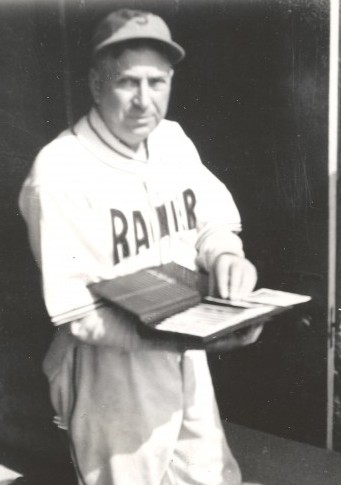
That 1934 team might have been the best in PCL history, or at least close to it. In the first half of a split season, the Angels won 66 games and lost only 18.
The second-half became a continuation of the first, the Angels finishing with 71 wins and 32 losses. The Angels .733 overall winning percentage was easily the best in league history.
After the Angels finished 88-88 in 1936 (tied for fifth in the PCL), Lelivelt became embroiled in a dispute with Angels ownership and resigned as manager.
For one year (1937) he scouted for the Chicago Cubs (the Angels parent team), then came to the attention of Emil Sick, who had recently purchased the woeful Seattle Indians from Bald Bill Klepper.
When Sick began casting about for a manager, he didn’t know whom he would hire, or even the kind of manager he should hire. In the late winter of 1938, Sick and Torrance took a trip east to consult with major league owners with the idea of generating a list of candidates.
When Sick and Torrance visited with Col. Jacob Ruppert, then owner of the New York Yankees, Ruppert referred Sick to his manager, Joe McCarthy, who immediately suggested Lelivelt, who had been his teammate in 1918 at Louisville.
I have recommended only one manager in my life, McCarthy told Sick. He (Lelivelt) did all right for Los Angeles, so why not hire him?
Sick met Lelivelt, who favored a bowler hat, for the first time in Sacramento in early 1938, and it didnt take long after that meeting for Sicks aides (notably Torrance) to sign Lelivelt to a one-year contract, making him the 15th manager in the 22-year history of the Indians-Rainiers franchise (Lelivelt got the job over former major league star Kiki Cuyler).
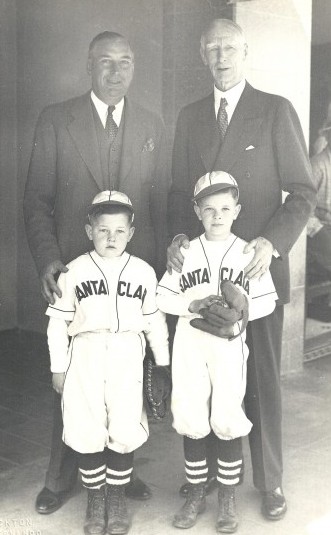
But when Sick heard about the length, he tore up the contract and made it a three-year deal. Lelivelts first-year salary: $7,500.
You cant reorganize this team in a year, Sick said of his club, which had gone 81-96 (sixth place) in 1937 while teetering on bankruptcy.
Lelivelt, who loved to play golf (he usually shot in the low 80s), did a superb job of it after Sick wisely gave him control over all personnel matters, including the hiring and firing of players, and contract negotiations.
With Seattle this year (1938), the business organization is composed of baseball neophytes, from Emil Sick, president and principal owner, down to Bill Mulligan, business manager, explained the Seattle Times.
Mulligan and Torchy Torrance, vice-president, have considerable sports experience, but none in professional baseball.
That leaves a considerable burden up to manager Jack Lelivelt. He has been given free hand to make deals, given complete charge of the playing personnel, even to bartering with the players over contracts (a job a club president usually reserves for himself). The situation is unusual in the Pacific Coast League, although it has been gaining acceptance in the majors, particularly with Pie Traynor in Pittsburgh.
Lelivelt made his first two personnel moves on Jan. 6, 1938, purchasing outfielder Al Marchand and infielder Eddie Leishman from Kansas City, the New York Yankees Class AA farm club (Leishman would go on to become a prominent minor league executive, first with the Salt Lake Bees and then with the San Diego Padres).
Then, on Jan. 27 came the key move of the 1938 season, the signing 18-year-old Franklin High star Fred Hutchinson, a pitcher/outfielder who had spent the previous summer with the Yakima Indians of the Northwest Semipro League.
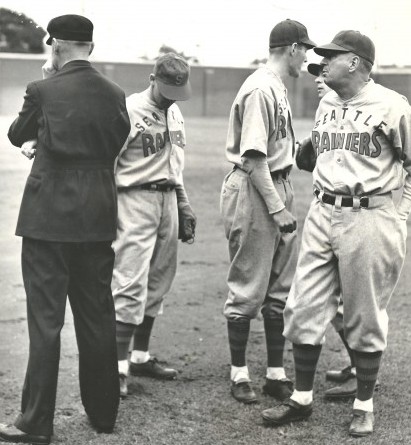
Most observers ranked Hutchinson, who received a $2,500 signing bonus, as the best prospect to emerge from the Northwest since Seattle’s Jeff Heath, a marvelous hitter who reached the majors in 1936 with the Cleveland Indians (in 1938, Lelivelt’s first year with the Rainiers, Heath had a 58-hit month of August for the Indians).
Two weeks later, on Feb. 6, Lelivelt made another key acquisition, signing Queen Anne High product Edo Vanni, a further signal that the new manager was determined not to repeat the policy of the teams previous front-office regimes, that of failing to sign the best available Northwest talent.
The Indians had practically chased Snohomishs Earl Averill out of training camp in 1924 (Averill was not yet PCL ready) and he had gone to become one of the American Leagues top hitters.
When the Indians expressed scant interest in Harlond Clift, who began his career in 1931 with the same Yakima semi-pro team for which Hutchinson had played, he signed with the St. Louis Browns (Clift had played six major league seasons by the time Lelivelt became the Rainiers manager).
The Indians also passed on Rube Walberg, once a coal truck driver in Ballard, who went on to spend 10 years in the majors. Neither did Seattle have any interest in Heath, who went to the Cleveland Indians, nor in Joe Gordon, a University of Oregon shortstop, about to replace Tony Lazzeri in the Yankees infield.
The 1938 team that Lelivelt assembled and took through spring training at El Centro, CA., became and remains one of the most fascinating in Northwest baseball history. After finishing 81-96 as the Indians under managers Spencer Abbott and Johnny Bassler, the Rainiers, playing in the new Sicks Stadium, went 100-75 (a 19-game improvement) and finished second to Los Angeles (105-73).
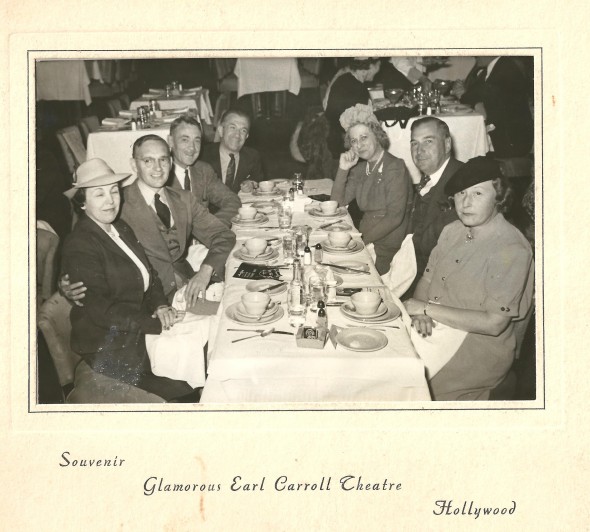
(When Lelivelt’s first team reported to training camp in El Centro, it was still known as the “Indians.” During spring training, all three Seattle newspapers (Times, Post-Intelligencer and Star) referred to the team as the “Indians,” “Rainiers” and “Rainiers-Indians.” Not until after Opening Day did all three newspapers start identifying the team exclusively as the “Rainiers.”)
More important than the record, perhaps, was the effect the Rainiers had on the city. Fans bonded to the players, who became major civic celebrities.
While Lelivelts first Seattle club featured an array of good hitters Dick Gyselman batted .305 with 214 hits pitching carried the Rainiers. Four starters won at least 17 games, and Hutchinson not only won the most (25-7 with 29 complete games and a 2.48 ERA), he certified himself a local superstar and emerging Northwest legend.
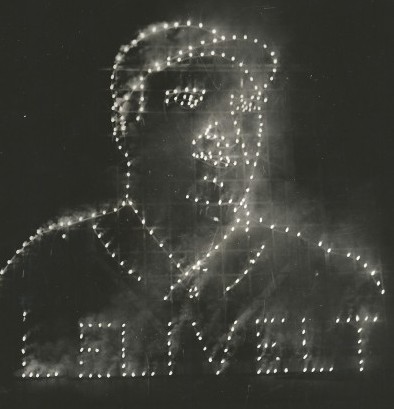
In one of the more memorable games of his season, Hutchinson won his 19th game on his 19th birthday on Aug. 12 in front of a bustling crowd of 16,354, largest of the season. Five days later, on Aug. 17, Hutchinson won his 20th (a 9-0 shutout of the Sacramento Solons), allowing just three hits while striking out 12.
Hutchinson also had a perfect day at the plate, drawing a walk, hitting two singles and a home run, driving in four runs and scoring three himself.
Lelivelt, who called Hutchinsons Aug. 17 performance “the greatest one-man exhibition I’ve seen in all my years in baseball,” recognized that he would not be able to keep Hutchinson out of the major leagues for long, but hoped to have the popular teenager back in 1939. In fact, Lelivelt was asked frequently during the 1938 season where Hutchinson would pitch in 1939. Lelivelt always said, “My guess is Seattle.”
It didnt work out that way. Desperate to catch up with the New York Yankees, the Detroit Tigers made an offer for Hutchinson that the Rainiers couldnt pass up. Sick, Torrance and Lelivelt all went to Detroit to close the transaction.
Made deal that sends you to Detroit 1939. Fine opportunity for you to realize your ambition and good deal for our club. Wanted you to know first. Will give you details when we arrive. Regards to your mother and dad.
Sick, Torrance and Lelevilt all signed the telegram to Hutchinson, who had also been coveted by the Yankees and Pittsburgh Pirates. While Sick and Torrance went to Detroit to oversee the financial aspect of the deal the Rainiers received $50,000 Lelevilt attended the negotiations to ensure the Rainiers received right package of players.
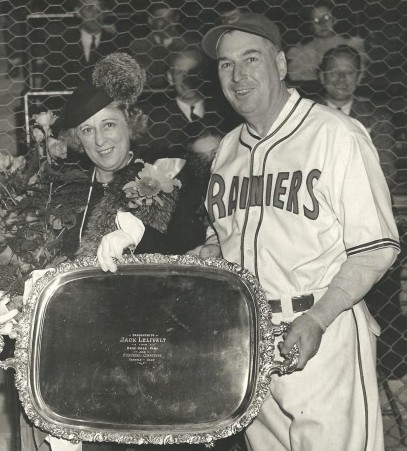
Lelivelt wound up with outfielder Jo Jo White, infielders George Archie and Tony Piet and pitcher Ed Selway, acquisitions (except for Piet, who didn’t report to Seattle) that made significant contributions (especially White and Archie) in what became the greatest era in Rainiers history (White not only played four years with the Rainiers he served as manager from mid-1946 through mid-1949).
For Lelivelts 1939 club, Archie hit .330 and won the PCLs Most Valuable Player Award. The Rainiers featured four other batters who hit .300 or higher, including Alan Strange (.335) and second-year man Edo Vanni (.325). Newcomer White, who had played for the Detroit Tigers from 1932-38, also had a big year as he led the Rainiers and PCL with 47 stolen bases, and Mike Hunt supplied the power (15 home runs).
The 1939 Rainiers also featured five pitchers with at least 16 wins, including Hal Turpin (23-10), Dick Barrett (22-15), Paul Gregory (18-11), Les Webber (17-7) and Bill Walker (16-18).
The Rainiers parlayed pitching, defense and timely hitting, plus a nice blend of youth and experience, into a 101-73 regular-season record, giving Seattle its first pennant since Red Killefer’s 1924 Seattle Indians.
Lelivelts 1940 club made further strides, going 112-66 in the regular season and polishing off his former team, the Angels, 4-1 in the postseason Governor’s Cup. It marked the first time the franchise had captured back-to-back PCL titles.
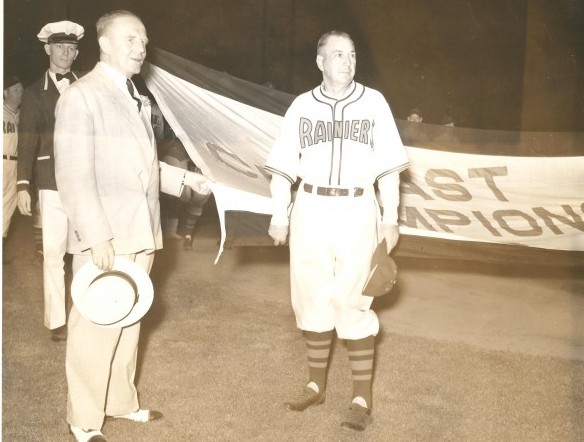
On Sept. 25, 1940, 15,000 fans jammed Sicks Stadium to watch the Rainiers raise the pennant they clinched on Sept. 5 and honor Lelivelt for winning the regular-season title. They presented Lelivelt and his wife, Ethel, a huge silver platter paid for by the dimes and nickels collected from Rainiers fans themselves.
Sick informed the cheering thousands that Lelivelt, completing his third year with the franchise, had just been awarded a new three year-contract (his scheduled $12,000 salary would make Lelivelt the highest-paid minor league manager in 1941).
I hope that will be for a lifetime, Sick said, also obviously elated that the Rainiers led all minor league teams in attendance since Lelivelt had come aboard.
Vanni led the way on the 1940 team, hitting .333, while Archie checked in at .324. Barrett turned in an outstanding season with a 24-5 record, while Turpin won 23 games.
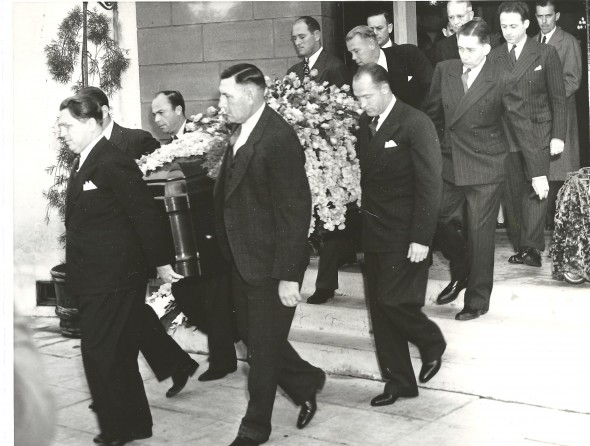
The 1940 Rainiers hit only 32 home runs during the regular season, but in the Governor’s Cup clincher, they blasted four, including a two-run shot by Archie with Bill Lawrence aboard, in an 8-5 victory.
One day after winning the championship, the Washington Senators drafted Archie, claiming him for $7,500 (Archie played in just 121 major league games, batting .273). Outfielder Frank Kelleher and catcher Ed Kearse reverted to the Yankees.
Not quite four months later, after a winter of golf, Lelivelt left his offseason home in Van Nuys to attend a Pacific Coast League meeting in Oakland. Following the meeting, he intended to spend a week in Seattle, finish up his contract offers to the 32 players scheduled to report to spring training, then return to California for a short vacation in advance of his fourth season as manager of the Rainiers.
Lelivelt had made good choices on the 32 players to whom he offered contracts. The Rainiers, under new manager Bill Skiff, who had come to Seattle after running the Yankees farm system, won their third consecutive PCL title, becoming the first club to accomplish that feat since the Vernon, CA., Tigers in 1918-20.
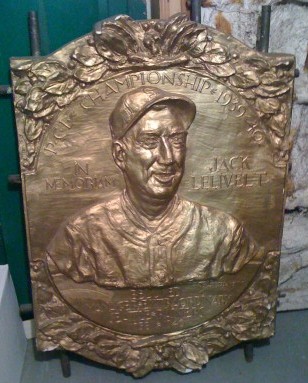
Two days following Lelivelts death, several Rainiers players attended a short service at Seattles Bonney-Watson Funeral Parlor. To a man, they talked to Seattle newspapers about Lelivelt’s “fairness,” his “good judgement,” his knack for “making players feel important, wanted and needed,” and for his “even temper” (Lelivelt never was ejected from a game during his tenure with the Rainiers).
I never knew a manager who understood a pitchers problems as well as Jack did, said Barrett, who, according to newspapers, sobbed throughout a short service.
He was a winning manager, but patient and understanding along with it. Seattle will never find his equal, added pitcher Paul Gregory.
Four days after Lelivelt’s death, hundreds attended his funeral at Cathedral Chapel in Los Angeles. He was entombed in Glendales Grand View Memorial Park Cemetery.
In 1999, the Seattle Post-Intelligencer, in an end-of-century article, ranked Lelivelt as the 15th best coach or manager in local sports history. Only two baseball managers rated a higher place (Lou Piniella and Rogers Hornsby) than Lelivelt, who won 1,861 games as a minor league manager. Only one other manager in Seattle’s professional baseball history won more, Red Killefer 1,940).
After Lelivelt died, the Seattle Times described him as honest and fair and a disciplinarian but not a taskmaster. The Times had this anecdote: Once, told by a writer to cheer up after a loss to Oakland in 1938, Lelivelt said, Cheer up — hell. This stuff about being a good loser is bunk. Did you ever see anyone who enjoyed losing?
Lelivelt taught the Seattle Rainiers how to win, but could not teach himself how to lose.
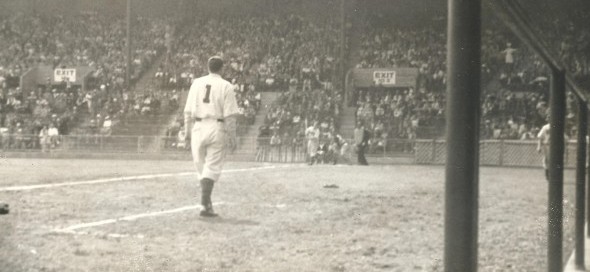
The complete story of the Seattle Rainiers is told by Dan Raley in his book Pitchers of Beer, published in 2011, which we recommend highly.
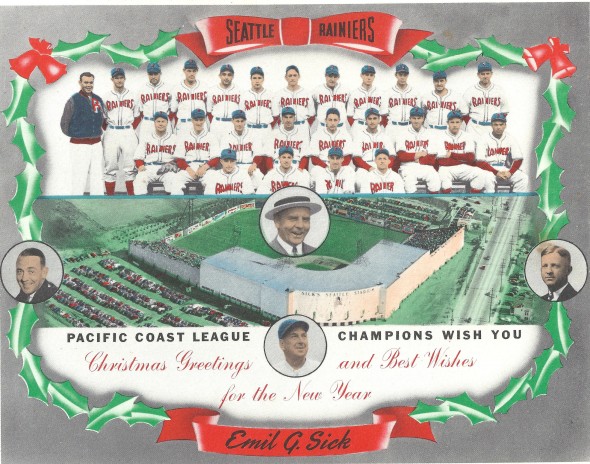
Check out David Eskenazis Wayback Machine Archive. David can be reached at (206) 441-1900, or at seattlesportshistory@gmail.com

19 Comments
What’s with this – – This post is only viewable for paid members please upgrade your account to view full text.????????
What’s with this – – This post is only viewable for paid members please upgrade your account to view full text.????????
What’s with this???????? This post is only viewable for paid members please upgrade your account to view full text.
What’s with this???????? This post is only viewable for paid members please upgrade your account to view full text.
Ichiro trade win-win. Since the M’s have made a few poor trades with Jack, (Fister for Wells, Furbush, (still may pan) and Smoak for Cliff Lee) and bad signings, (Chone Figgins anyone), I’ve reclassified Jack Z as average. No longer a free ride. Hey Jack Z, have you noticed the Oakland Athletics? Billy Bean Busting Your Balls. Why are we always looking up at the A’s, huh? Sabermetrics?
But I like Wedge. We’ve hit the iceburg, we are taking in water, but Wedgy never stops shuffling those deck chairs, never.
Brandon League should’ve been pitching to Nix today in the 8th, not Kelley.
Yes, I agree with all comments. Z is on the hot seat this winter with that $17 mil is in hands, some of which may be offered to Felix, new face of the franchise, for a new deal. I don’t think the King will take it, referring to no doubt “test the market” after his contract is up and maybe play for a world series hopeful. My bet is some of Ichi’s appropriated salary amount will be lost if next year’s budget is less than this year’s (likely). Why pay more when you have a guy down by the Bay like Billy Beane proving you can do more for less? Maybe the M’s could make a film about their 17 game losing streak last year and see if Brad Pitt is up for a comic role.
Gotta wonder what Ichiro’s thoughts were about this game. He got only one hit but his team scored five runs and won the game. That wouldn’t have happened on the other side of the field. He should be more relaxed and be able to play his game. In theory, he could rediscover what’s been missing from his game the past couple years. Of course, having the Yankee lineup behind him rather than what the M’s have been trotting out helps. And Yankee Stadium is a wee bit more friendly to hit in than Safeco Field. And I agree with Art that the Yankee clubhouse is much more suited to his personality. The club took several steps backwards in Jack Z’s second year.
Agreed that the luster is coming off Jack Z’s rep now. I’ve said it before: as a GM so far he’s about as good as Dick Balderson.Hate to say it but I’ll probably be rooting for the Yankees to go all the way this season. Just to see Ichiro and Raul get rings.
Agreed. I’ll never buy an M’s ticket until these really foolish old codgers get out of town.
We need a counter-marketing slogan. A slogan that sticks. Ideas? You know, something like ” C &H Ain’t Sweet –Boycott”only better.Ideas?
as a longtime fan of the game, i found ichiro interesting to watch. he has a very disciplined approach to the game and seems to be extremely fit unlike some players. i always hated how he used a translator for interviews and see from art’s column that it was just a filter so it comes of as a message that he does not really care to relate to the fans paying his salary. i also felt that ichiro was rather anti-clutch in the hitting department. even when he put up the amazing numbers, it seemed like he rarely go the big hit when the team needed it. but now the mariners are really just a dressed up triple a team and they ain’t going nowhere soon.
Couldn’t have said it better. I truly brelieve though that Ichiro knew he was holding the mariners down and wanted out of pride to get out of the way.A world series right would not be objectionable either. I think he will retire after this year.
If not new ownership, could we please have new leadership at the helm? Comparing the M’s to say the Marlins, a team that plays in a market where they still have trouble drawing fans to a brand new stadium, the M’s management is paralyzed most of the time. The Marlins made a bunch of moves last winter, and now have realized that they aren’t working, so now they are making changes and blowing up the roster. That would never happen here. Instead we would hang on to the mistakes, keep running them out there or sitting them on the bench until the contracts expire. Howard Lincoln runs this team like it’s a Nintendo game console well past it’s prime, where you push crappy games out the door, then sit back and collect the profits. No need to make changes or improvements as long as people keep buying it and laying down money for the shovelware games, or bobble heads as the case is with the M’s. This market is different than Miami or Tampa Bay, fans will come out and support a winner, I just wish we had ownership and management that were up to the task.
there must be a .195 ss and a .205 1B out there just waiting for the Ms. go for it!
Brandon Belt.
No! No! No!. A team needs five good starters, and we only have two, so why trade one of them? makes no sense. Anyway without pitchers the ball would just sit on the mound and the game would never start, which in the case of these particular Ms is maybe not such a bad idea.
Vargas has won 30 games in 2+ seasons for a team that will have finished last each year. Beyond Felix, he’s been the most reliable starter in Seattle. And he’s a lefty. I’m a little lukewarm on signing him for $10 million a year but as things stand right now, he’s worth keeping around.
If Safeco is such a terrible place to hit, as some have suggested, then the park can make an average pitcher look great. Why not trade Vargas, call up a player and get some hitters who can hit in Safeco? Stands to reason that is the need right now. The club found Millwood off the scrap heap and he’s done okay. But a good hitter is hard to find it seems.
The real question is, should Seattle bother having a MLB team?
According to baseball-reference.com
the Mariners overall record, from 1977 to 2012 is 2633 wins and 3013 losses with only 4 playoff appearances.
Pathetic.
I agree with Randy that the club should have accomplished a lot more than they did during his time here but they fell short. As parts have left, from Randy to Dan to Junior to ARod to Edgar to Bone to Boonie, Ole, Cammy, Lou and others some things stay the same as other parts of the machine have been changed. And it isn’t nearly as smooth running as in the past.
Makes you kinda wonder.
Well…..nah. Not really. I think when Pat Gillick abruptly left the club spoke volumes as to the problems of the franchise.